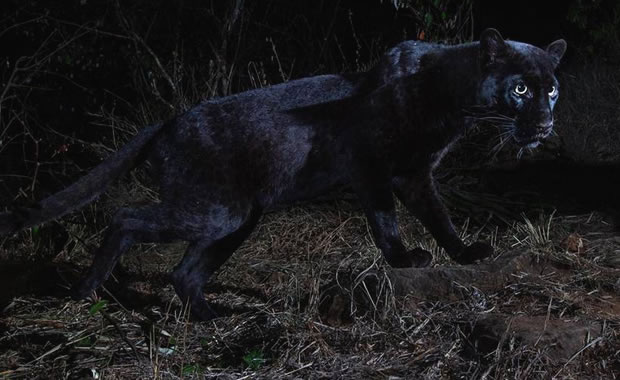
Chatham Island Black Robin
|
Creature Profile
The Chatham Island black robin is found on the Chatham Islands off the east coast of New Zealand. The species was first discovered in 1871 and by 1976 there were only seven black robins left in the wild due to disturbance by human settlement, predation by feral cats and rats, and poor environmental conditions. To save the species conservationists collected the remaining population with only one breeding female remaining in the group, named "Old Blue." Old Blue and the rest of the birds were carried in boxes to a more protected location on Mangere Island.
Chatham island black robins are small birds, the size of sparrows, with brownish-black feathers. Adults stand only 15 cm high and have short, slender bills and long legs. Males and females are similar in appearance, but females tend to be smaller. They are poor fliers and spend much of the time on or near the forest floor. Their wings are only used to flit from branch to branch, and they are not able to fly for long distances.
Their habitat requirements include scrub forest remnants with closed canopy and open understorey. Since they are poor fliers, they spend most of the time in the lower tree branches and tree stumps for protection against strong winds. They are insectivores and feed on invertebrates such as cockroaches, worms, wetas, and grubs. They are very territorial--males patrol their areas and will defend it if necessary and even females have been known to chase away other females. Males and females remain in pairs for life and produce two eggs every year. The female incubates the eggs while the male gathers food to feed her as she rests. The eggs hatch 18 days later, and both parents help with feeding the chicks.
"Old blue" eventually mated with another black robin (named "Old Yellow") and successfully raised 11 chicks. Some of her eggs were taken before hatching and placed in the nests of other bird species where they instinctively raised the chicks as foster parents. This was done purposely so that when Old Blue found her eggs gone, she would lay more. So the chicks
would not pick up the habits of the other bird species, they were taken from their foster parent's nests and placed back into their mother's nest for just a few days until they were able to leave the nest on their own. These conservation measures proved successful, and there are now over 250 Chatham Island black robins in the wild, all descendents of Old Blue and Old Yellow.
This species is still listed as endangered, and since they are an inbred species, there is still a threat. All Chatham Island black robins have similar DNA and can all be killed at once by a single disease. Today, there are no known inbreeding defects effecting the species, and because their numbers have grown significantly, the Department of Conservation plans to establish populations on other islands.
Wikipedia Article

|
Wikipedia Article Copyright Notice: This article is licensed under the GNU Free Documentation License. It uses material from the Wikipedia article "Black robin". |
May 12, 2017
Glenn, C. R. 2006. "Earth's Endangered Creatures - Chatham Island Black Robin Facts" (Online). Accessed 4/16/2024 at http://earthsendangered.com/profile.asp?sp=405&ID=4.
Need more Chatham Island Black Robin facts?




